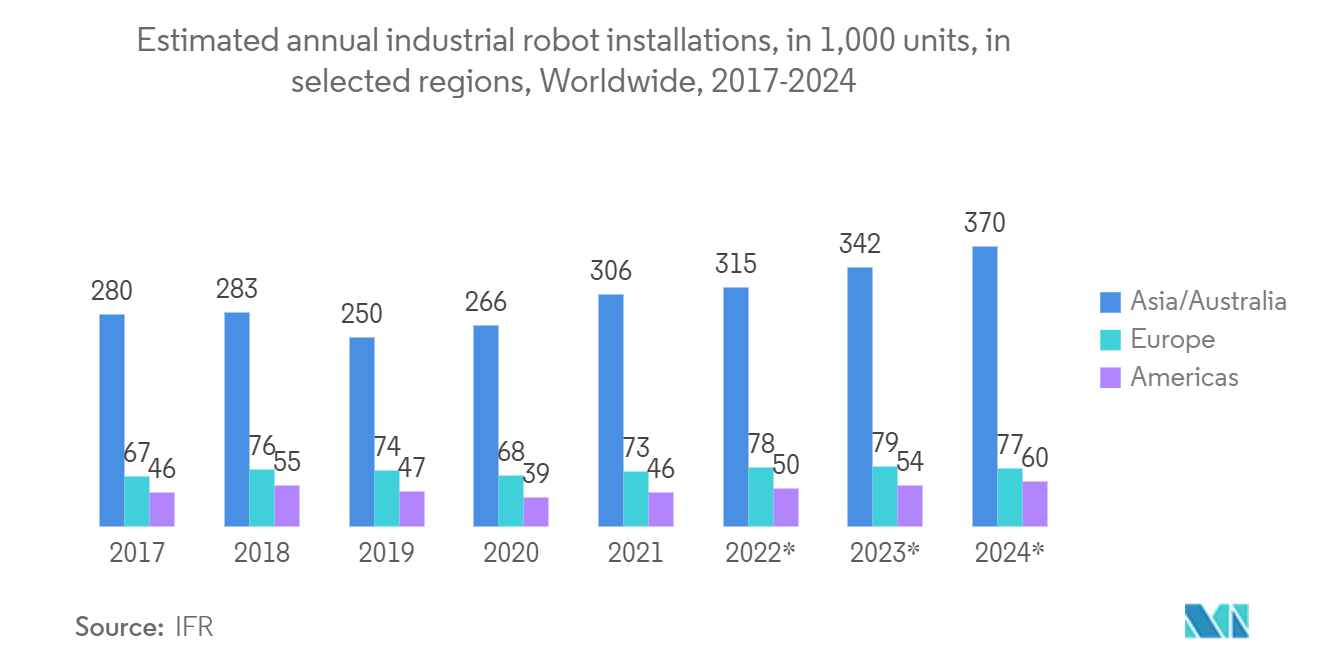Market Trends of United States Smart Sensors Industry
This section covers the major market trends shaping the US Smart Sensors Market according to our research experts:
Temperature Sensors are Expected to Drive the Market's Growth
- A smart temperature sensor is an integrated system comprising a temperature sensor, bias circuitry, and an analog-to-digital converter (ADC). A temperature sensor measures heat to ensure a process stays within a specific range, providing safe application usage or meeting a necessary condition when dealing with extreme heat, hazards, or inaccessible measuring points. The demand for reliable, high-performance, low-cost sensors is increasing, leading to new technologies like microtechnology and nanotechnology. For the temperature range of -55 to 150°C, bipolar junction transistors are very suited to be applied as temperature sensors because they can be fabricated in almost any standard IC technology, together with other circuitry.
- The low cost, small size, and ease of use led the sensors to widespread use in various industries, such as automobile, residential, medical, environmental, food processing, and chemical. Some of the common temperature sensor types include thermocouples, IR sensors, and thermistors. Temperature sensors find their primary usage in a smart thermostat, a smart home device. The demand for smart homes is forecasted to grow rapidly, owing to robust consumer interest, incremental technological innovations, and greater accessibility.
- The need for minimized contact with surfaces elevated the development of sensor systems for smart home ecosystems. In January 2022, GE Lighting expanded its smart systems portfolio, Cync, by introducing a Smart Thermostat and Temperature Sensor, a line of Outdoor Security Cameras, and additional lighting products to the family of connected products at CES 2022. The cync room temperature sensors work in tandem with their smart thermostat to monitor individual rooms or the entire home and automatically optimize the room temperature.
- Additionally, temperature sensors enable accurate non-contact temperature measurement in healthcare. Physicians use IoT-based temperature trackers to measure ear, forehead, or skin temperature. Responding to the pandemic, FLIR Systems Inc. announced the FLIR A400/A700 Thermal Smart Sensor and Thermal Image Streaming fixed camera solutions for monitoring equipment, production lines, critical infrastructure, and screening for elevated skin temperatures.
- These highly configurable smart camera systems offer accurate and non-contact temperature monitoring across various disciplines: manufacturing process control, product development, waste management, facilities maintenance, emissions monitoring, and Environmental, Health, and Safety (EHS) improvements. The thermal smart sensor configuration, recommended for measuring elevated skin temperatures, incorporates enhanced measurement tools and alarms with edge computing to enable faster critical decisions.

Industrial Automation Segment is Expected to Hold a Major Market Share
- The new industrial IoT (IIoT) technologies are becoming a key component in helping manufacturing companies to maximize the ROI from smart factory initiatives. Massive shifts in manufacturing due to industry 4.0 and the acceptance of IoT require enterprises to adopt agile, smarter, and innovative ways to advance production with technologies that complement and augment human labor with robotics and reduce industrial accidents caused by process failure.
- Smart factories adopt IoT technologies through sensors, robots, software, wireless systems, enterprise software, M2M learning, or other technologies to gather, share, and analyze data. Powered by connectivity and sensors, it generates actionable and near real-time data insights about the condition of physical things in the factory and throughout the supply chain. This, combined with data analytics, new technologies, and a fast network, is helping manufacturers better maintain their assets and boost production efficiency.
- Furthermore, the market penetration of AI and machine learning capabilities may enhance speed, accuracy, and data analysis, significantly driving the market further. The advancement in the field devices market, sensors, and robots may further expand the scope of the studied market.
- The adoption of smart systems can reduce the need for human labor, particularly in challenging environments. Quality control processes have historically relied on human intervention. Nevertheless, with more user-friendly controls, the greater availability of these smart factory systems is expected to gain popularity in complex manufacturing settings.
- Industrial robot technology is a disruptive phenomenon in the manufacturing process and is expected to bring a revolution in the smart factory market. Implementation of industrial robotics has led to advanced production processes that help in improving productivity, reducing human errors, and increasing production volume.
- Through the integration of smart sensors, Smarter factories can help plant managers by providing tools needed to optimize the production process, perform high-speed testing of advanced manufacturing designs, and optimize all logistics. Smart factory technology and IoT devices have far-reaching implications for efficiency, product quality, and safety across the manufacturing value chain. IoT technology can empower elements of smart manufacturing, such as quality assurance, equipment maintenance, warehouse operations, inventory management, and other manufacturing operations.


